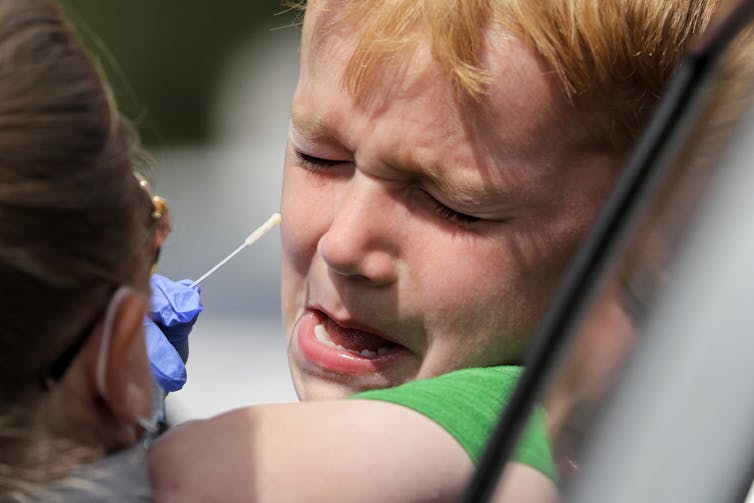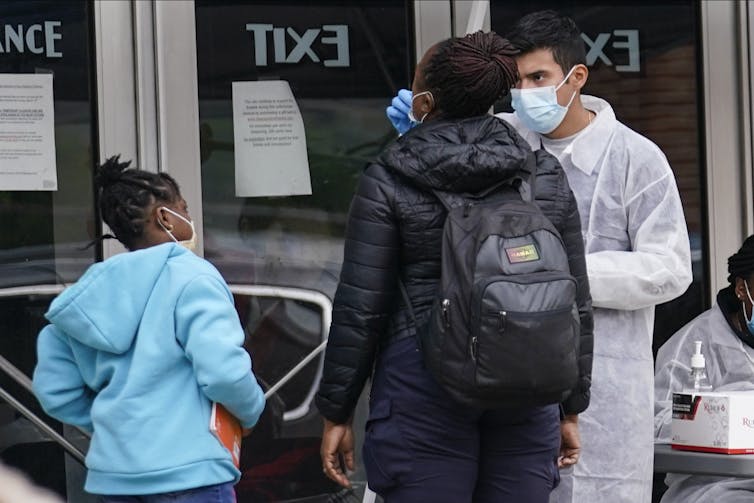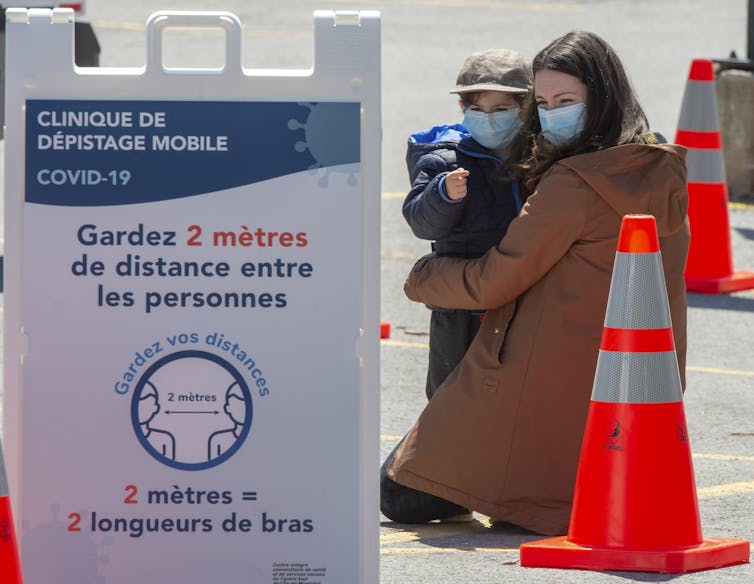6 tips to prepare your child for easy COVID-19 testing

Dhaka, 14 October, 2020: Back to school means more germs, but familiar symptoms like sore throats, fevers and sniffles have taken on a new meaning during the COVID-19 pandemic. Public health policies across the country and around the world may require children to get tested for COVID-19 and be symptom-free before returning to school. This means more kids are receiving nasopharyngeal swabs (also called “nasal swabs”) or throat swabs to test for COVID-19.
As child health psychologists, we have studied and prepared hundreds of children and their families to undergo medical procedures with ease. While testing for the novel coronavirus may be new, effective ways to prepare kids for pain- and distress-free medical procedures are not. In fact, scientists and health-care providers have been working at this for a long time! We’ve put together six top tips to prepare your child for easy COVID-19 testing.
What to do before
1. Prepare your child by sharing child-friendly information.
When children or their parents are nervous about upcoming medical procedures, parents sometimes think that the less information they share with their child the better. The opposite is actually true.
Children have vivid imaginations that fill in the missing details, sometimes imagining things as much worse or scarier than they are in real life. Sharing age-appropriate information about medical procedures with children early on is a more effective way of reducing fears.
For the COVID-19 test, parents should describe in detail what children can expect — almost like telling a story. Important details include where they will go, who will be there, what they will see, how long it will take, what will happen and how it might feel.

Alex Rodgers, 6, cries and tries to squirm away from a medical assistant attempting to take a swab sample up his nose at a drive-thru coronavirus testing site in Seattle on April 29, 2020. Preparation and a coping plan could have made this an easier experience. (AP Photo/Elaine Thompson)
Be honest with your child, stick to the facts, and use neutral language. For example, when describing how it might feel when the swab goes in: “Some kids say that it feels weird like having fizzy water up their nose and hurts a bit but others say it doesn’t really bother them.”
There are brief scripts and pictures about COVID-19 testing that you can use. There are also short videos created just for children from B.C. Children’s Hospital, the Hospital for Sick Children or the Mayo Clinic. Watch these together to give you ideas for coping strategies.
2. Create a coping plan.
It’s important to plan the strategies you will use leading up to, during and after the COVID-19 test. And, it gives time to practise your strategies. Knowing the plan makes it easier for children and their parents, especially if anyone is feeling nervous.
No matter your child’s age, they can be part of developing the coping plan. Younger children will need more parental support, but having “a job,” even one as simple as being in charge of sitting still, can increase their confidence. Older children and teenagers will have their own ideas of what helps them to feel relaxed and stay calm, and giving them choice when appropriate helps them feel empowered.
A woman and child wait in line at a mobile COVID-19 testing clinic on May 12, 2020, in Montréal. THE CANADIAN PRESS/Ryan Remiorz
It’s especially important to plan for any aspects that might be particularly tricky for your child — when you help prepare them ahead of time (see No. 1), you might get some extra clues about when they need the most support.
3. Distract your child while you wait with something fun and interactive.
You and your child will likely wait in line in the car or on foot, which can lead to boredom, frustration or increased worry about what is about to happen. Use this time to distract your child and engage them in something fun or interactive. Listen to music, ask your child about their favourite show, make up a story, let them play a game or watch a video on your phone or tell some jokes. Earphones may be helpful.
What to do during the swab
If you have multiple family members getting tested at the same time, have the child who is the most relaxed or least worried go first. Or go first as a parent to model coping strategies and show how easy and quick the test can be.
4. Use comfort positioning.
Comfort positions (not restraint) help children to feel safe and calm during medical procedures. If you are in a drive-through testing site, parents can sit side by side in the car next to their child with their arm wrapped around their child. If you are in a testing centre, younger children can sit on their parents’ lap either facing sideways or with their back to their parents’ chest. Parents then hold their child close, like a hug. Gently wrapping your child in a blanket before hugging them may help.
Read more: Fear of needles: 5 simple ways to ease vaccination pain for your child (and yourself)
For some children, it may be helpful for parents to gently hold their child’s forehead to keep their head still during the swab. For older children and teens, parents can be seated next to them with a hand on their shoulder or leg to provide physical comfort while the swab is in.
5. Tell your child to look up, take deep breaths, count and close their eyes.
Coaching your child to take some deep belly breaths from their mouth during the swab helps them to stay relaxed. Counting together to 20 (or even the parent counting alone) keeps your child’s attention on something other than the swab and helps them understand when it will be finished. Suggesting your child close their eyes may also help.
What to do after

A medical professional administers a COVID-19 test in front of the Kew Gardens Cinemas movie theatre in the Queens borough of New York City on Oct. 5, 2020. (AP Photo/Frank Franklin II)
6. Talk to your child about what they did well.
It’s very likely that your child will have to get more than one COVID-19 test in their life. Helping children remember the test experience in a factual or positive way makes it more likely that the next test will go well or even better.
Talk about something that they did well from their coping plan: for example, “You did a great job taking your big belly breaths.” You may even want to record a mini video interview with them on your phone afterwards talking about what they did well — this could help for the next time.
Some children may be worried that getting tested for COVID-19 means that they have the virus. Remind them that this isn’t necessarily true, that the test results will come in a few days, and that you and others are here to help.
Read More
.


